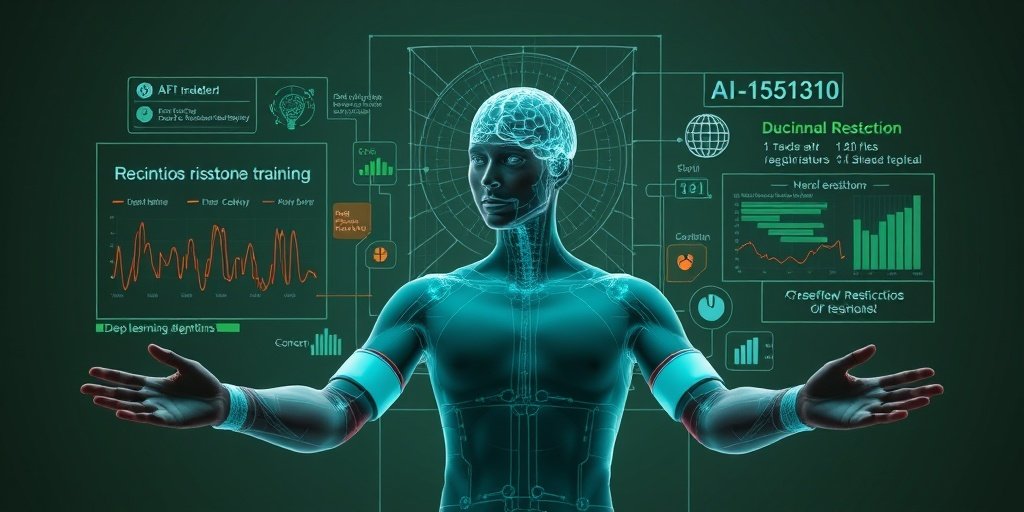⚡ Quick Summary
This study investigates the effects of blood flow restriction (BFR) training on cortical activity using deep learning techniques. The findings reveal that while BFR elicits distinct cortical responses, these responses are highly individualized, with classification accuracy exceeding 90% for individual subjects.
🔍 Key Details
- 📊 Participants: 6 subjects
- 🧠 Technology: Magnetoencephalography (MEG) and deep learning-based brain-computer interfaces (BCIs)
- ⚙️ Model Architecture: BaseNet
- 🏆 Performance: Classification accuracy > 90% for individual subjects, chance-level accuracy (33%) for cross-subject models
🔑 Key Takeaways
- 💪 BFR training combines low-intensity resistance exercises with restricted blood flow, promoting muscle hypertrophy and strength.
- 🧠 Cortical activity in response to BFR is largely unexplored, presenting a unique research opportunity.
- 🤖 Deep learning models can effectively decode complex brain signals related to BFR.
- 📈 Individual variability in cortical responses poses challenges for generalizing findings across different subjects.
- 🔍 Cross-time models showed improved performance with accuracy exceeding 50%.
- 🌟 This research highlights the potential of BCIs in understanding neural mechanisms underlying physical training.
- 📅 Study published in IEEE International Conference on Rehabilitation Robotics, 2025.
- 🆔 PMID: 40644184

📚 Background
Blood flow restriction (BFR) training has gained popularity in the fitness and rehabilitation communities due to its effectiveness in enhancing muscle growth and strength with lower intensity exercises. However, the neural mechanisms that underpin these benefits remain largely uncharted territory. Understanding how BFR affects cortical activity could provide valuable insights into its efficacy and optimize training protocols.
🗒️ Study
The study aimed to explore the cortical responses to BFR training using advanced deep learning techniques. Conducted with six participants, the researchers employed magnetoencephalography (MEG) to capture brain activity before, during, and after BFR. The data underwent rigorous preprocessing to enhance model performance, utilizing the BaseNet architecture for classification.
📈 Results
The results were promising, with classification accuracy exceeding 90% for individual subjects, indicating that distinct cortical responses to BFR can be detected on a personal level. However, when models were tested across different subjects, the accuracy dropped to chance levels (33%), underscoring the significant variability in responses. Cross-time models demonstrated better performance, achieving accuracy rates above 50%.
🌍 Impact and Implications
The findings from this study have profound implications for both the fields of sports science and rehabilitation. By leveraging deep learning and BCIs, researchers can gain deeper insights into the neural mechanisms of BFR training. This could lead to more personalized training regimens and improved outcomes for individuals undergoing rehabilitation or strength training. The study opens the door for further exploration into how neural responses can inform exercise science.
🔮 Conclusion
This research highlights the exciting intersection of neuroscience and exercise physiology, showcasing the potential of deep learning in decoding complex brain signals. As we continue to explore the cortical responses to BFR, we may uncover new strategies for enhancing athletic performance and rehabilitation outcomes. The future of integrating technology with physical training looks promising, and further studies are encouraged to expand on these findings.
💬 Your comments
What are your thoughts on the implications of this research for training and rehabilitation? We would love to hear your insights! 💬 Leave your comments below or connect with us on social media:
Exploring Cortical Responses to Blood Flow Restriction through Deep Learning.
Abstract
Blood flow restriction (BFR) training, which combines low-intensity resistance exercises with restricted blood flow, is effective in promoting muscle hypertrophy and strength. However, its impact on cortical activity remains largely unexplored, presenting an opportunity to investigate neural mechanisms using brain-computer interfaces (BCIs). Deep learning (DL)-based BCIs, with their large capacity for decoding complex brain signals, offer a promising avenue for such exploration. This study utilized magnetoencephalography (MEG) to analyze cortical responses in six subjects across three conditions-before, during, and after BFR. After preprocessing steps, such as data standardization and Euclidean-space alignment to optimize performance, the BaseNet architecture was utilized to classify the data. The models were tested using within-subject, cross-subject, and cross-time data splits. The results revealed classification accuracy well above 90% for individual subjects, indicating that cortical responses to BFR are detectable on a personal level. However, cross-subject models achieved only chance-level accuracy (33%), highlighting significant variability between individuals. Cross-time models showed better performance, with accuracy exceeding 50%. These findings suggest that while BFR elicits distinct cortical activity patterns, these responses are highly individualized, presenting challenges for generalization.
Author: [‘Koellner J’, ‘Wimpff M’, ‘Gizzi L’, ‘Vujaklija I’, ‘Yang B’]
Journal: IEEE Int Conf Rehabil Robot
Citation: Koellner J, et al. Exploring Cortical Responses to Blood Flow Restriction through Deep Learning. Exploring Cortical Responses to Blood Flow Restriction through Deep Learning. 2025; 2025:546-552. doi: 10.1109/ICORR66766.2025.11063023